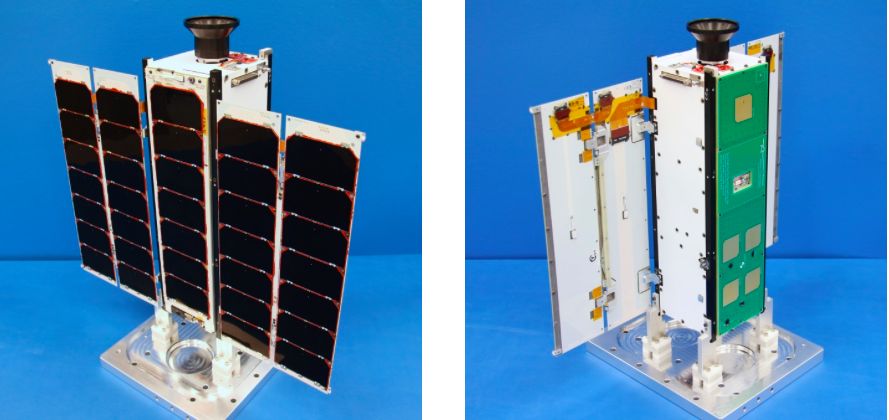
The rocket explosion that destroyed a cargo vessel bound for the International Space Station Tuesday (Oct. 28) also took out an asteroid-mining company's first spacecraft.
Orbital Sciences Corp.'s Antares rocket exploded in a huge fireball just seconds after launching from NASA's Wallops Flight Facility in Virginia Tuesday evening. The crash caused no injuries but destroyed Orbital's unmanned Cygnus capsule, which was toting 5,000 lbs. (2,268 kilograms) of food, supplies and other gear to the International Space Station for NASA.
Among Cygnus' cargo was the Arkyd 3 satellite, a tiny technology demonstrator built by asteroid-mining firm Planetary Resources. [Orbital Sciences' Antares Rocket Explosion in Pictures]
The plan was to deploy Arkyd 3 (also known as A3), which measured just 12 by 4 by 4 inches (30 by 10 by 10 centimeters), from the space station into free-flying low-Earth orbit, where it would test out avionics, control and other systems for future asteroid-prospecting spacecraft.
Planetary Resources is taking the loss of A3 in stride.
"While we are saddened about the unfortunate consequences of this launch failure, our own development schedule, budget and plan are practically unaffected," Planetary Resources President Chris Lewicki wrote in a blog post today (Oct. 29).
"In fact, we are already hard at work developing our next test vehicle, the Arkyd 6, which is planned for launch in Q3 2015," he added. "It will build on the learnings from our development of the A3 and iterate to our next level of design. Multiple spacecraft and safety in numbers is part of our strategy, and we will continue with it for just these occasions."
Get the Space.com Newsletter
Breaking space news, the latest updates on rocket launches, skywatching events and more!
Representatives of the Washington state-based firm, which counts Google execs Larry Page and Eric Schmidt among its investors, have said they hope to launch asteroid-hunting "Arkyd 100" scouts to low-Earth orbit in the next few years. Further down the road, Planetary Resources plans to launch other robotic probes to investigate potential mining targets up close, in deep space.
Eventually, the company aims to extract and sell asteroid resources, starting with water. Asteroid water can be split into oxygen and hydrogen — chief components of rocket fuel — allowing voyaging spaceships to top up their tanks without returning to Earth, mining advocates say.
Editor's Note: NASA officials are urging residents of the area around Wallops Flight Facility to stay away from any pieces of rocket debris that might wash up on shore or be found on land. If you think you may have found pieces of the rocket, please call the incident response team at (757) 824-1295.
Follow Mike Wall on Twitter @michaeldwall and Google+. Follow us @Spacedotcom, Facebook or Google+. Originally published on Space.com.
Join our Space Forums to keep talking space on the latest missions, night sky and more! And if you have a news tip, correction or comment, let us know at: community@space.com.

Michael Wall is a Senior Space Writer with Space.com and joined the team in 2010. He primarily covers exoplanets, spaceflight and military space, but has been known to dabble in the space art beat. His book about the search for alien life, "Out There," was published on Nov. 13, 2018. Before becoming a science writer, Michael worked as a herpetologist and wildlife biologist. He has a Ph.D. in evolutionary biology from the University of Sydney, Australia, a bachelor's degree from the University of Arizona, and a graduate certificate in science writing from the University of California, Santa Cruz. To find out what his latest project is, you can follow Michael on Twitter.









